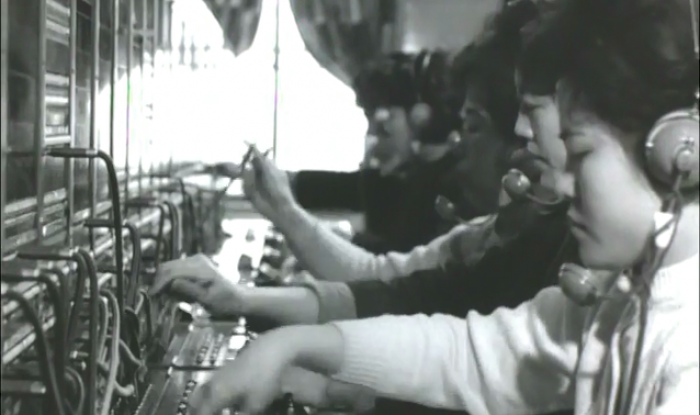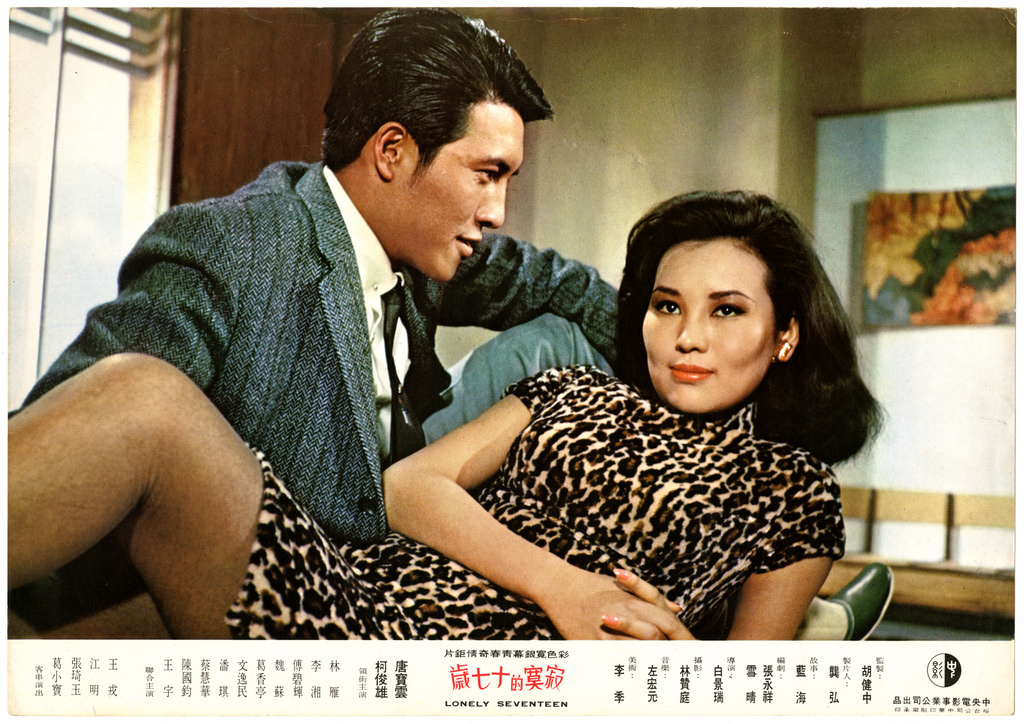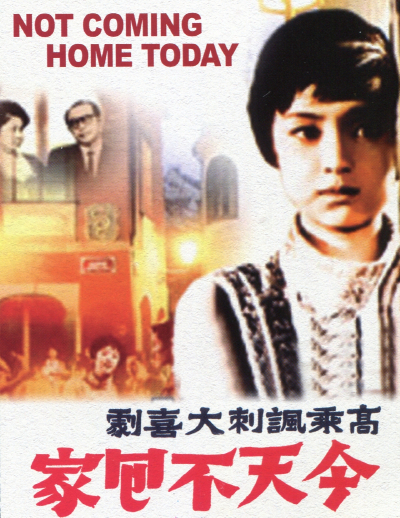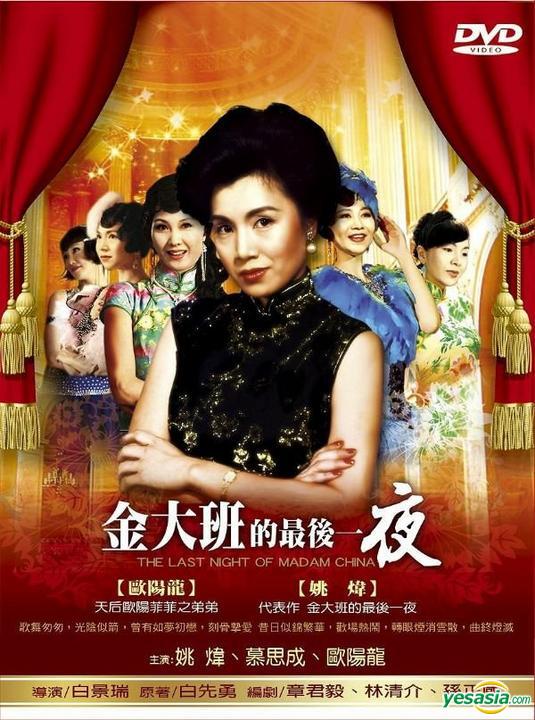
As one of few Taiwanese filmmakers who studied abroad several decades ago, Pai Ching-jui studied in Accademia di Belle Arti di Roma in 1961 and Centro Sperimentale di Cinematografia di Roma in 1962. Inspired by Italian Neorealism, his works include healthy realism films and romantic films based on the novels written by Chiung Yao, who is one of the most popular romance novelists in the Chinese-speaking world. Pai tried to experiment with different kinds of picture composition and music in his films. Also, there is some deep criticism of the era hidden in the light humor of the films.
From the 1960s to 1970s, people around the world was trying to break free from the authority, pursue freedom, and seek their true self. Rock music and punk music emerged. The old studio system in Hollywood fell, and the world started to embrace European New Wave cinema. At that time, Taiwan’s film industry was restricted by its historical glitches, such as Japanese colonialism and the KMT policy of cultural assimilation. Thus, Taiwanese audience had difficulty accepting experimental films. Under the circumstances, the Central Motion Picture Corporation (CMPC) introduced “Healthy realism” to the world in the 1960s. Healthy realism films applied the Italian Neorealist approach of shooting on location without taking in the dark and pessimistic style and chose to focus on the beautiful lives of those kind but ordinary people.
A morning in Taipei (1964) was Pai’s first film after he came back to Taiwan. “At the time, CMPC were encouraging filmmakers to produce healthy realism films. However, Pai took a documentary approach to shoot this film, which was hardly approved by the studio. Therefore, the project was aborted, and there were only two tapes left,” according to Taiwan Docs. A morning in Taipei captured different views of Taipei, from the streets in the morning light, vendors in the traditional markets to the newspaper agencies. The narration of the film was not linear, and there wasn’t any room for politically correct ideology. That might be the reason why this film couldn’t be recognized then. The film didn’t have any sound effect or voice-over, but the silence of the film gives room for the audience’s imagination. Several decades later, the film was finally released. In 2008, Documentary director Cheng Wen-Tang teamed up with the band Aphasia to perform live music along with the screening of the film. The contemporary music Cheng and Aphasia created filled the gap between generations and replicated the look of Taipei city in the 1960s.
As mentioned before, Pai’s directorial debut Lonely Seventeen (1968) was also a film whose theme appeared to be love. But in fact, it was an enlightening film. Originally, the focus of the film lies in youngsters’ stress and mental health problems, but CMPC forced Pai to follow the rules of healthy realism and make it a romantic story. In the film, the teenage girl, played by Bao-Yun Tang, falls in love with her cousin, played by Chun Hsiung Ko. After the cousin is killed in a car accident, the girl thinks God is punishing them and becomes schizophrenic. In the end, she is cured and gets herself back to “healthy.”

From the musical design of the film, we can see Pai’s innovative ideas. There is one scene where the teenage girl is getting dressed in her gorgeous robes. Without a word, the atmosphere of the scene is solely built up by various styles of music. For example, the “Danse chinoise” from the Nutcracker perfectly matches the shyness of the girl when she is putting on her silk stockings and high heels. Through the music, the audience can experience that slight feeling of being in love for the first time. Besides, Pai used the spinning sky and a screech in two different scenes. One was when the sensitive teenager girl is on the carousel in an amusement park, and the other was when she hears the news of her cousin’s death. Pai also mixed the image of rotating chandelier with her cousin’s face to represent the unstable mental status of the teenager girl. Such approaches might remind the audience of the amusement park scene in Hitchcock’s The Stranger On the Train (1951) and the electronic high-frequency sounds in Vertigo (1958). As the sound fades and enhances, the audience might feel dizzy and nervous like the characters feel.
In the next year, Pai adopted Italian comedy approach in his three-act comedy Not Coming Home Today (1969). The plot of the film is surrounded by problems in three different families. There are a lost girl who fails the college entrance exam, a cuckold husband, and a cheating husband. The parallel narratives, split images, and counterpoint music created a sense of humor that caused a sensation in Taiwan back then. The theme song of the same name was performed by Yao Surong, a female singer who was famous in the 1960s. The lyric of the song illustrates the fancy restaurants that serve as private clubs for entertainment and business in Taipei. Just like the theme song of Fantasies Behind the Pearly Curtain (1974), both of them were played throughout the films. When the characters are sad, the song will fade in to highlight the emotions. When there is a comedy bit, the beat of the song will be sped up to lighten up the ambiance. Besides, Pai also put some western pop songs into Not Coming Home Today, such as Donna Donna by Joan Baez and Unchained Melody by Todd Duncan, to make it more popular. What’s more, after the film became a hit in Taiwan, Pai was asked to remove the word “not” from the cover of the second edition of the original soundtrack because the government was afraid that a title like “Not Coming Home Today” would discourage household happiness. It seems that Pai’s freedom to create was always limited by the social and political environment, which was a problem he could hardly solve.

As an artist, Pai was forced to choose between art and commerce. However, During the period of martial law, he made a bold move to shoot Goodbye Darling (1970), which was based on the left-wing writer Chen Ying-zhen’s short story Generals. The film not only captured the lives of the grassroots, but it also depicted the city life, such as the girl band performing in both weddings and funerals, the open-air theatrical performances, and the sausage gambling in the crowded night market. Every frame of the movie is a historical moment in an ordinary life. The male lead A-Lang, played by Chun Hsiung Ko, is an idle troublemaker who speaks Taiwanese. The last scene of the film is especially worth mentioning. When the female lead Gui-zhi, played by Chang Mei-Yao, is trying to persuade A-Lang, the picture jumps to a race of a train and two trucks filled with pigs. The sounds of the northbound trucks and the whistle of the train mixed up with pig’s roar and couple Taiwanese curse words. The sounds kept piling up and finally broke down. It seemed to conclude the money-oriented lives of the pathetic and ordinary people in Taiwan.
Among all of Pai’s works, The Last Night of Madam Chin (1984) can be seen as the representative work of his late career. The film is based on Pai Hsien-yung’s short story from his book Taipei people, which vividly illustrates the other side of life in northern Taiwan in the 1960s. Women were forced to work at dance halls to pay for their tuition or make ends meet. The music in dance halls demonstrates that the early development of Taiwan’s recording industry was closely related to China’s singers. Bosses, mafias and dance hostesses were swaying with the songs from China, such as Flying All Over The Dance Floor performed by Zhang Fan and The Fire of Love performed by Bai Guang, to get over the longing for the prosperity of Shanghai. Meanwhile, local lads who hardly made ends meet could only immerse themselves in the melody of Night Rain in Harbor City and think about their hopeless and helpless lives on boats. At the end of the film, The Last Night performed by Tsai Chin seems to conclude madam Chin’s life as the lead of dance hostesses in Paramount dance hall, which also reflects the reality of a growing society.

Opposite to the conservative trend in Taiwan’s film industry, the western ideology and shooting techniques in Pai’s films wrote a new chapter in Taiwan’s cinema. The documentary-style films he made, from A Morning In Taipei, Goodbye Darling, to Lonely Seventeen and The Last Night of Madam Chin, preserve the old look of the cities and the country in Taiwan and also allow us to listen to the songs that were once popular between the 1960s and 1980s.
 No products in the basket.
No products in the basket.